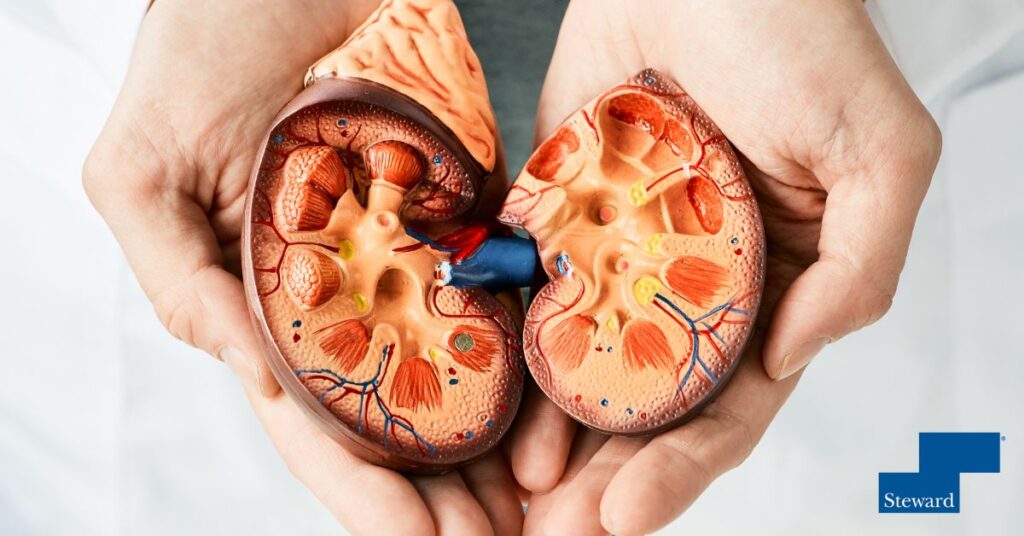Kelly Amison, OTR
Director Rehabilitation Services at Sebastian River Medical Center
What is dizziness? What is vertigo?
People often use the word “dizzy” to describe a few different kinds of sensations. Sometimes when people say they feel dizzy, they mean they are feeling the sensation of vertigo. This is a sensation of spinning, tilting, or floating that occurs without any actual movement. Vertigo is most often caused by an inner ear disturbance but can also be caused by a central (brain) disturbance. Other times, when people say they feel dizzy, they mean they feel a lightheaded sensation, like they might pass out or faint. This is typically associated with low blood pressure or other cardiovascular issues. Another sensation that commonly gets described as feeling dizzy is confusion, or “brain fog” type symptoms. These sensations are more commonly associated with metabolic disturbances.
What kinds of vertigo can be treated by a physical therapist?
The most common cause of vertigo is an inner ear disorder called Benign Paroxysmal Positional Vertigo (BPPV). This type of vertigo can often be completely resolved within one to two visits with a physical therapist. The next most common causes of vertigo – Meniere’s disease, vestibular neuritis, and vestibular labyrinthitis – will not resolve quite as quickly and dramatically as BPPV but can still be improved with physical therapy treatment. For patients with vertigo of a central origin, such as stroke, migraine, and multiple sclerosis, physical therapy may be an important component of a broader treatment plan.
What is BPPV?
Benign Paroxysmal Positional Vertigo (BPPV) is a disorder of the inner ear. Inside our inner ears, we have a set of three semi-circular canals. These canals are full of fluid and are lined with sensory hairs. These canals function just like a construction level does. When the fluid moves as we change positions, it gently sloshes the sensory hairs around, and this movement gives our brain information about how our bodies are moving around in space. When we move from lying down to sitting up, when we turn our heads, when we roll over in bed, or bend over to tie our shoes, the fluid moves around the circular canal and gives our brain the sensation that we have changed position. This is how our inner ears work when they are functioning normally.
When someone has BPPV, small crystals have migrated from an area of the inner ear where they belong, into the semi-circular canals where they don’t belong. These crystals bang and rattle around in the canals, slamming into the sensory hairs and sending very confusing information to our brains. Rather than the normal movement of rolling from your left side to your right side, someone with crystals in their semi-circular canal would feel as though they’ve suddenly gone rolling down a hill. However, once the crystals have settled into their new position, the vertigo sensation stops until you move in a way that disturbs the crystals again. Thus, people with BPPV feel a brief (usually less than 30 second) sensation of very intense vertigo, and then it resolves. This vertigo is always provoked by a position change (sitting up in bed, rolling in bed, bending over, looking up, etc.), and always resolves quickly after the person has stopped moving.
Why do people get BPPV?
The short answer is, we don’t know exactly. It is very common, an estimated 1.6% of the population has an episode of BPPV each year (Neuhauser and Lempert, 2009). BPPV accounts for approximately 20% of all dizziness seen in medical offices. BPPV is much more common in older people, and the prevalence increases with age (Froeling et al, 1991). Among older people, BPPV accounts for about 50% of dizziness complaints. The explanation for this is likely that “wear and tear” on the vestibular system leads to degeneration, causing increased likelihood of loose crystals that can end up where they don’t belong.
In people under 50, the most common cause is head injury or whiplash style injuries, where these crystals are essentially shaken loose (Luryi, et al, 2019). There is also an association with BPPV developing after dental work, where the cause is thought to be a combination of the prolonged tipped back position along with vibration from drilling causing these crystals to drift into the semi-circular canals.
How do we treat BPPV?
Because BPPV is caused by loose crystals floating into parts of the inner ear where they don’t belong, the treatment for it is very simple- we just move the crystals back out of those semi-circular canals. This is accomplished through a series of head position changes to cause the crystals to roll back out of the semi-circular canal they had rolled into, which may be performed by a physical therapist. Studies have shown that approximately 81% of patients with BPPV have resolution of symptoms with these maneuvers (Helminski et al, 2010). For most patients, that resolution occurs with only one treatment. Some patients will need to have the maneuver repeated a few times to ensure that all the crystals have moved.
How do we treat other causes of vertigo?
As discussed above, there are other causes of vertigo that can be improved through treatment in a physical therapy clinic. These causes include other inner ear disorders such as Meniere’s disease, vestibular neuritis, and vestibular labyrinthitis, as well as central disorders such as stroke, migraine, multiple sclerosis, and cerebellar dysfunction. These causes of vertigo will be diagnosed and managed by a physician, but there is often a benefit to including physical therapy as part of the treatment process. With these causes of dizziness, the primary focus of physical therapy is to stimulate the vestibular system to promote recovery of lost function, and to learn to compensate and adapt for changes caused by the disorder. Physical therapy treatment can help reduce fall risk, improve functional mobility, and decrease intensity of vertigo symptoms in many patients with these disorders.
References:
Neuhauser, H. K. and T. Lempert (2009). “Vertigo: epidemiologic aspects.” Semin Neurol 29(5): 473-481
Froehling DA, Silverstein MD, Mohr DN, Beatty CW, Offord KP, Ballard DJ. Benign positional vertigo: incidence and prognosis in a population-based study in Olmsted County, Minnesota. Mayo Clin Proc 1991 Jun;66(6):596-601
Luryi AL, LaRouere M, Babu S, Bojrab DI, Zappia J, Sargent EW, Schutt CA. Traumatic versus Idiopathic Benign Positional Vertigo: Analysis of Disease, Treatment, and Outcome Characteristics. Otolaryngol Head Neck Surg. 2019 Jan; 160(1):131-136.
Helminski JO, Zee DS, Janssen I, Hain TC. (2010). Effectiveness of particle repositioning maneuvers in the treatment of benign paroxysmal positional vertigo: a systematic review. Physical Therapy 90(5) 1-16V
To find a doctor or schedule an appointment, visit Steward DoctorFinder™.




